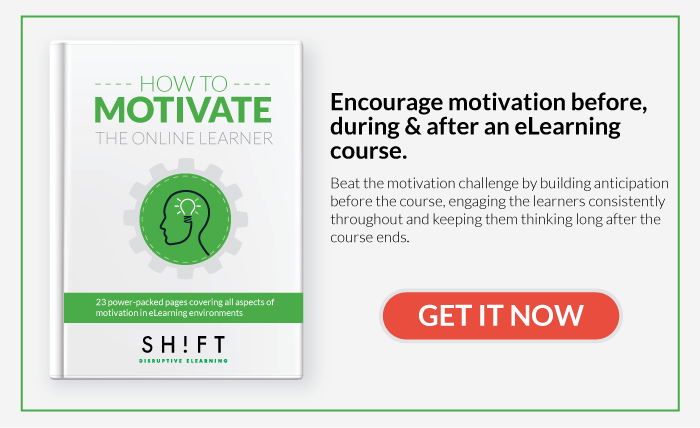Have you ever noticed how often employees sit through mandatory courses, but once it's over, nothing really changes? I bet we've all seen it – folks diligently taking notes but then... nada. No change in behavior, no improvement in work. Here's the thing: just ticking off a training box isn't enough. If there's no real goal or follow-up, it's like tossing our investment into the wind.
Before diving into designing a course, let's pause and ask: What's our endgame? Hoping for a safer workspace? A boost in sales? Stellar customer service? If our courses aren't aimed at making tangible changes in performance and results, we're kind of just spinning our wheels.
Here's a nugget of truth: Even if you have the snazziest, most engaging course materials, it won't matter much if it doesn’t spur any change in behavior. And sometimes, piling on more information isn't the solution. Many times, our teams know what to do; they just need a compelling why to actually do it.
So, let's rethink our strategy and make sure our eLearning courses aren’t just informative but also impactful.
Here's a roadmap to help ensure we see the results we're aiming for.
1) Engage with Your Learners Before Crafting the Course
One of the best ways to ensure a successful eLearning course? Connect with your audience first. Dive deep to understand their needs, aspirations, and concerns. Here’s why:
-
Understand the emotional terrain: Some might be anxious about training, especially if it's been ages since their last course. Others might not resonate with the subject matter. Remember, when the excitement and engagement are missing, learning tends to dip. It's a brain thing – without motivation, our brain doesn't get that dopamine hit it loves.
Actionable Tip: Start with a simple survey asking learners about their expectations and preferences. For those looking to elevate their approach, conduct a thorough needs analysis. This will not only capture the obvious but also the underlying challenges learners face.
-
Unearth hidden barriers: Learners might not always be conscious of what's holding them back. It could be deep-seated habits, beliefs, or mindsets. As eLearning leaders, it's our job to illuminate these blind spots and pave the way for effective learning.
Actionable Tip: Incorporate reflective exercises or self-assessment tools in your courses. These can help learners recognize and confront their own barriers, making the learning experience more transformative.
Remember, by building the bridge of understanding early on, we set the stage for more impactful and resonant courses. Let's make every learning moment count!
Also read:
These 27 Questions Will Help You (Really) Know Your Learners
The 5 Best Ways to Research Your eLearning Course Target Audience
2) Set Clear Post-Course Expectations and Drive Accountability
Before the first module even kicks off, every learner should have a crystal-clear picture of what's coming and what's expected post-course. Here's the power move: transparency fuels engagement.
-
Outline the journey and destination: Clearly communicate what they'll learn, the problems it'll help tackle, and how their boosted skills will elevate the entire organization.
Actionable Tip: Provide a course roadmap or syllabus in advance. This acts as a guide, detailing each module's objectives and the expected outcomes once the course wraps up.
-
Open the communication channels: The journey of learning often sparks questions. Ensure there's a go-to person or platform where learners can clarify doubts or get extra insights to fully harness the course's potential.
Actionable Tip: Set up a dedicated Q&A forum or schedule periodic check-ins with learners throughout the course duration. This fosters an environment where learners feel supported and empowered.
By setting the scene and keeping lines of communication open, you're not just informing them but actively guiding them towards results. When learners see the bigger picture, they're more likely to lean in, engage, and ultimately, deliver on those expectations. Let's champion transformative learning together!
3) Foster Post-Course Communication and Coaching for Lasting Impact
Here’s the scoop: The eLearning course might have a finish line, but the journey of application is ongoing. Real change bubbles up when learners roll up their sleeves and use their newfound knowledge in the real world. But they shouldn't have to navigate this path alone.
-
Bridge the post-course gap: Don’t leave your learners hanging post-training. While some might hit the ground running, others might need that extra nudge or clarification. Regular check-ins ensure they're on track and feel supported in their learning journey.
Actionable Tip: Schedule periodic one-on-one sessions or group discussions between supervisors and workers. These touchpoints can serve as opportunities to address queries, share feedback, or simply motivate.
-
Mentors make a difference: The value of experienced hands guiding the way can't be overstated. Ensuring that coaches or mentors are part of the post-training phase can accelerate the application of skills and reinforce learning.
Actionable Tip: Establish a mentorship program within the organization. Pair seasoned professionals with newer employees to cultivate an environment of continuous growth and support.
-
Empower the managers: If we're aiming for a broader shift in skills or behavior, why not get the team leaders on board? Equip them with the knowledge and tools to champion the change.
Actionable Tip: Organize refresher courses or workshops specifically for managers. This aligns the leadership with the training's objectives and ensures they're well-equipped to motivate and guide their teams.
Remember, a thriving organizational culture is the wind beneath the wings of any training program. Let's ensure our learners don't just finish a course but flourish in their roles with the knowledge they've gained!
Read more: 6 Potential Roadblocks You Need To Avoid On The Route To eLearning Success
Recommended read: 5 Reasons Why Your eLearning Programs Aren’t Working
4) Harness the Power of Practical Reinforcements
While eLearning offers rich insights and foundational knowledge, nothing quite compares to hands-on experience, especially in fields where real-time application is crucial.
-
Simulated Scenarios for Safe Practice: Let’s take the security industry as an example. While eLearning lays the groundwork, you wouldn’t want an employee’s first encounter with a security issue to be a real crisis. Simulated scenarios offer a controlled environment where learners can safely apply their knowledge and hone their skills without real-world repercussions.
Actionable Tip: Implement scenario-based training sessions post-eLearning courses. Tools like virtual reality or augmented reality can also amplify this experience, making simulations even more realistic and engaging.
-
Drive Engagement with Rewards: It's one thing to learn a new skill; it's another to embed it into daily practice. A little incentive goes a long way in motivating employees to embrace and apply their newfound knowledge consistently.
Actionable Tip: Introduce a rewards program for consistent application of skills or behavior changes. This could range from recognition awards, bonus points, or even tangible gifts.
-
Consistency is Key: Reinforcing learning doesn’t end once a course is over. Regular reminders can help solidify new habits, ensuring that employees not only recall what they learned but live it out daily.
Actionable Tip: Send out periodic reminders, tips, or mini-challenges related to the course material. This can be done via emails, team meetings, or even through an internal communications platform.
In the end, it's about turning knowledge into action. By grounding eLearning with practical training and consistent reinforcements, we ensure that learners don't just know better, they do better. Let's craft experiences that stick and skills that last!
Also read: Learning Is Not a One-Time Event! How to Promote Continuous Learning In Your Company
5) Equip Learners with Handy Recap Resources
Just like how a bookmark helps us quickly pick up where we left off in a novel, post-course materials can help learners easily revisit and reinforce crucial takeaways from the training.
-
Quick-Reference Tools: After the eLearning course concludes, share condensed, easy-to-digest materials that encapsulate the course's key elements. Whether it's a new procedure or an updated one, having a cheat sheet or checklist makes it simpler for learners to recall and apply their knowledge.
Actionable Tip: Design visually appealing, succinct infographics or checklists that capture the essence of the training. Ensure they're printable for desk-side reference and digitally accessible for on-the-go reviews.
-
Centralized Knowledge Hub: Don’t scatter these resources. Centralize them in one easily accessible location. Whether it's an intranet, a shared drive, or a dedicated platform, ensure everyone knows where to find these invaluable aids.
Actionable Tip: Create a dedicated 'Resource' section on your company's intranet or eLearning platform. Regularly update and organize the content, and periodically remind employees of its existence and benefits.
-
Inclusivity Matters: If the training is pivotal to job roles or organizational processes, consider making these materials accessible even to those who might've missed the eLearning course. This ensures uniformity and cohesion in performance across the board.
Actionable Tip: Announce the availability of these resources in team meetings or through company-wide emails. Encourage team leaders to familiarize their teams with the content, ensuring everyone's on the same page.
With these tools at their fingertips, learners are better equipped to transform insights into action and maintain a consistent level of expertise. Let's make knowledge not just accessible, but also easily revisitable!
The transformative potential of eLearning is undeniable. But to truly harness its power, we must look beyond mere course completion. It's about creating a seamless journey that starts with engaged learning, transitions to hands-on application, and is continuously reinforced with accessible, user-friendly resources. The true measure of eLearning's success lies not just in the knowledge gained, but in its lasting application and the tangible impact it creates in our workplaces.
As eLearning leaders, our mission is clear: craft experiences that not only inform but inspire, empower, and endure. Let's champion a learning culture that doesn't just end at the course's finish line but continues to drive excellence in every endeavor.



